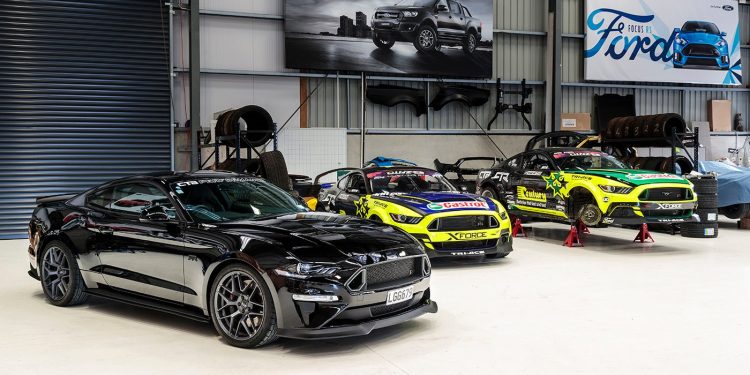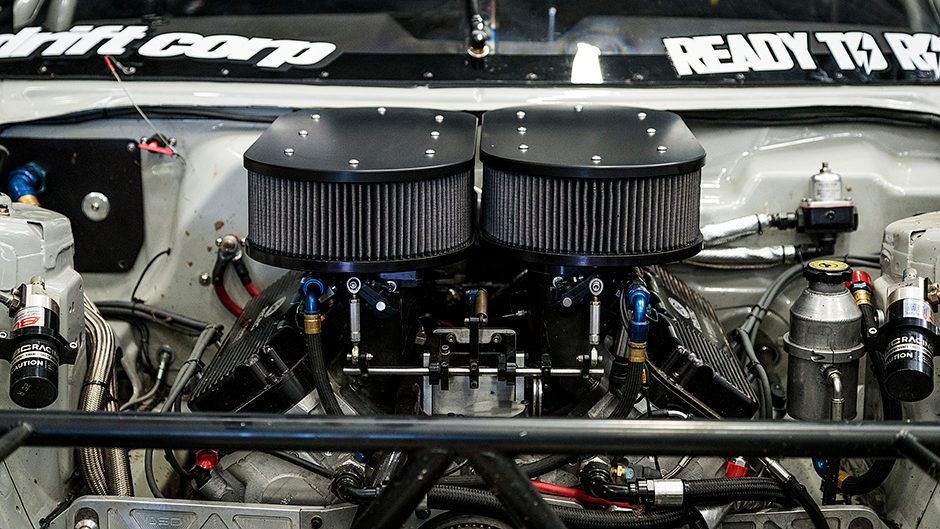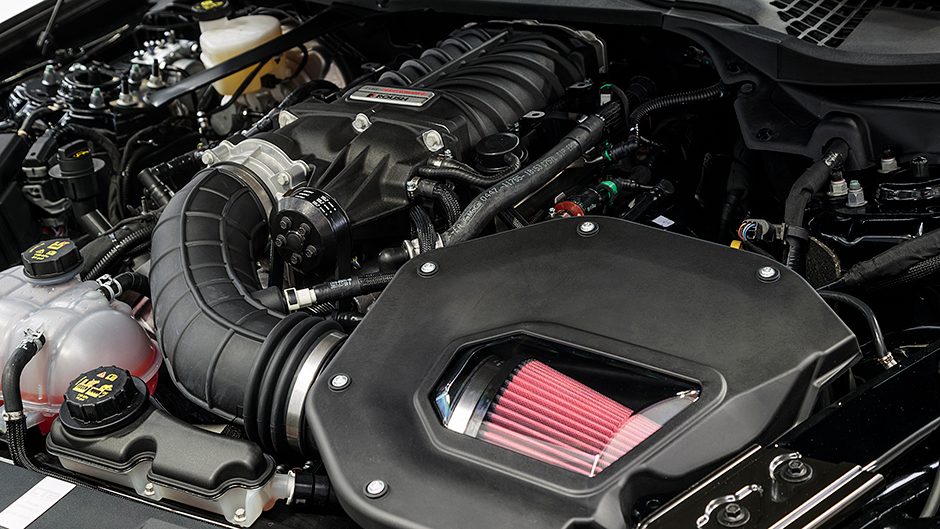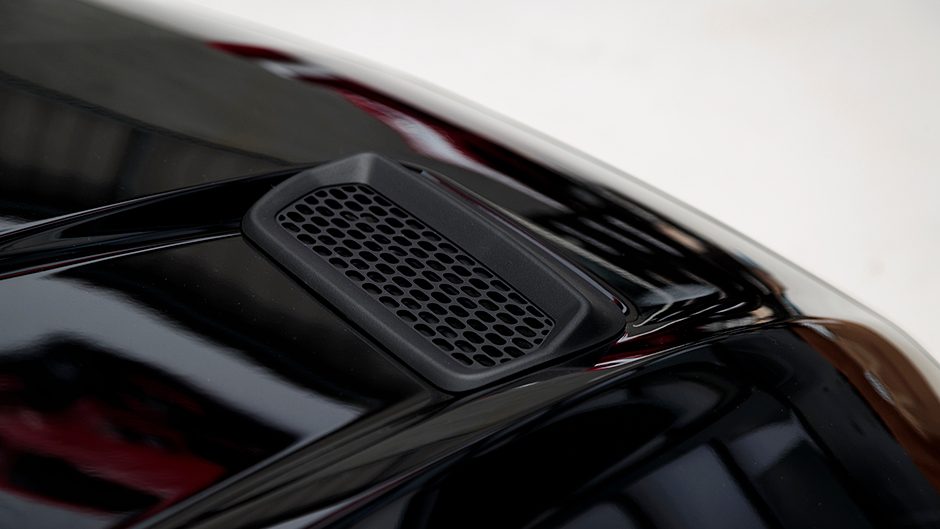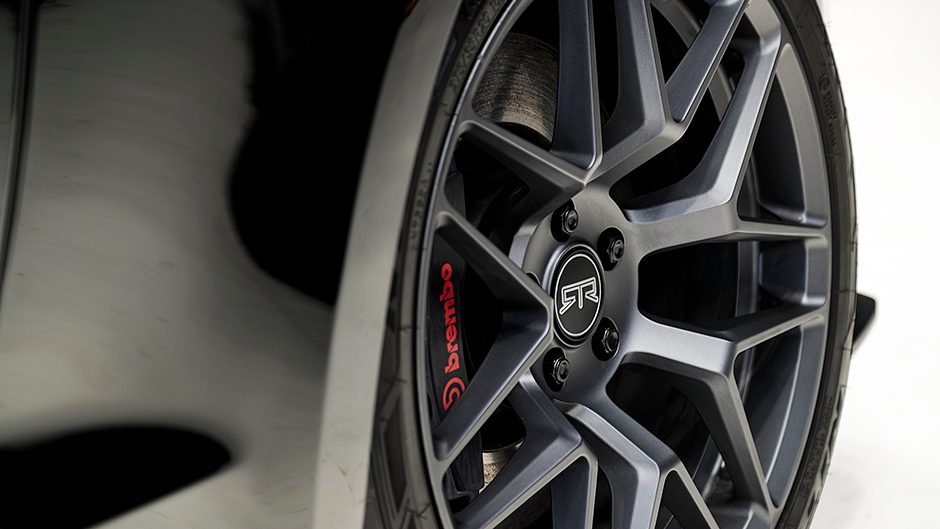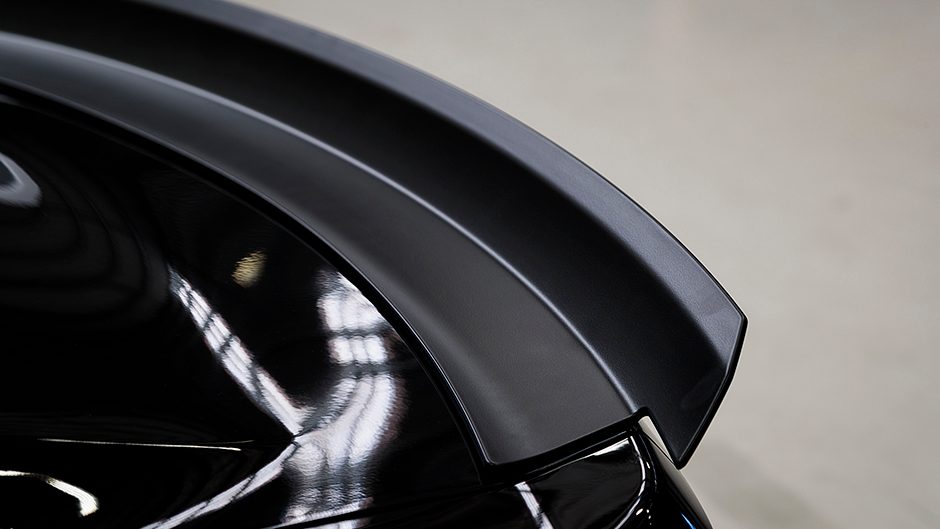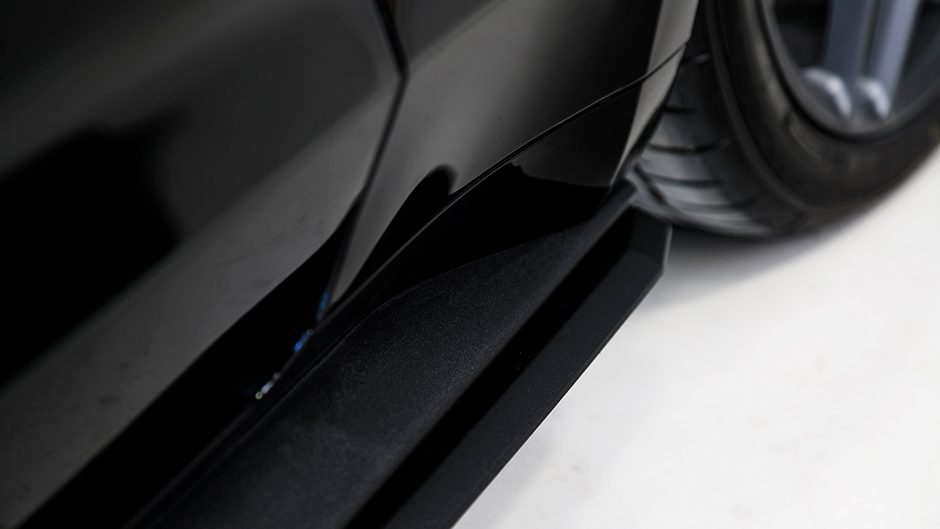2018 Ford Mustang RTR Spec 3 launch report
Words Kyle Cassidy | Photos Tom Gasnier
We delve into what it takes to turn a rumbling V8 Mustang into a 700 horsepower RTR Spec 3 firebreather.
We have to start this with an apology. It was our intention to bring you the full story on the new RTR Spec 3 Fastback, including the full drive experience featuring 700 supercharged ponies, but a last minute delay meant we can only bring you the story behind the modifications. The drive report will have to wait another month so you’ll have to be content with the details on what it takes to turn a 339kW Mustang GT in to a 520kW road burner.
Blown it again
Ford Performance and Roush have been producing supercharger kits for the Mustang for, like, years and with the update to the Mustang they’ve gone and designed a whole new set-up. According to Sam Bakalich of CTB Performance, New Zealand’s official Ford Performance supplier, there’s nothing from the old kit that can be used on this new set-up. There’s a new inlet manifold and a bigger supercharger to suck more air with the capacity to flow 2.65L per second, up from the previous 2.3.
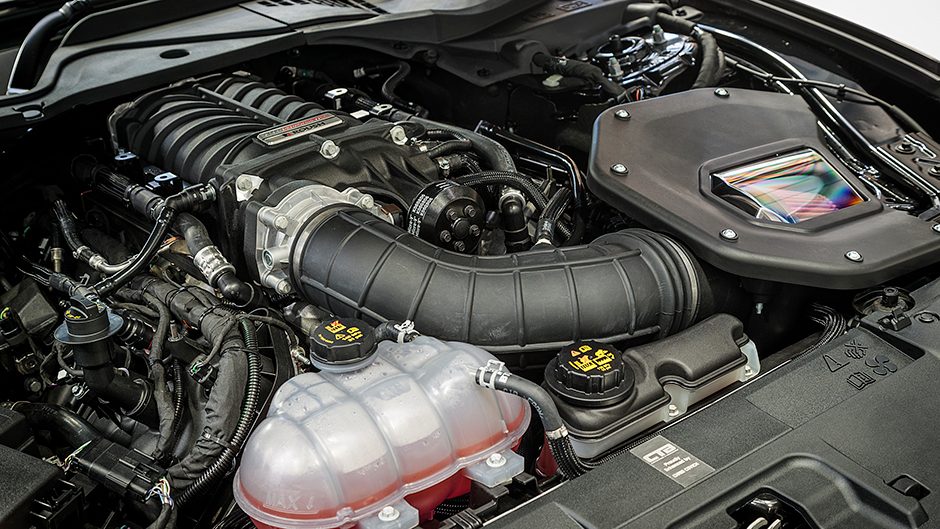
And that air now has a better path to the engine’s gullet, sucking it in from the front rather than having to snake its way around to the rear of the blower. This shortening of the pathway helps response, as does the move away from a twin throttle body, the package now using the large 87mm throttle set-up from the Shelby GT350. The airbox design is similar to that used on the naturally aspirated power-up packages and now has to be sealed to satisfy California emissions requirements.
The improved-for-2018 V8 features dual injection with a direct set-up for lean running during light throttle applications and port fueling for the top end. While they leave the direct set-up alone, there’s a new rail and pump for the port injectors. The supercharger runs a water-to-air intercooler with one of the heat exchangers living in the valley of the V8 and there’s one mounted up front.
Compared with the last kit, Bakalich says this one is more straightforward when applying it to the right-hand drive cars. These are the first right hook 2018 models in the world to be boosted and so there are a few minor parts that need to changed or adjusted to suit. For instance, the brake booster hose needs to be longer as it’s on the other side. He says it’s an easier application this time around where the previous model needed more fiddling under the bonnet to make everything fit. For example the battery box needed relocating, and the k-brace needed modifying to allow the throttle body more clearance but this is no longer an issue with the new inlet.
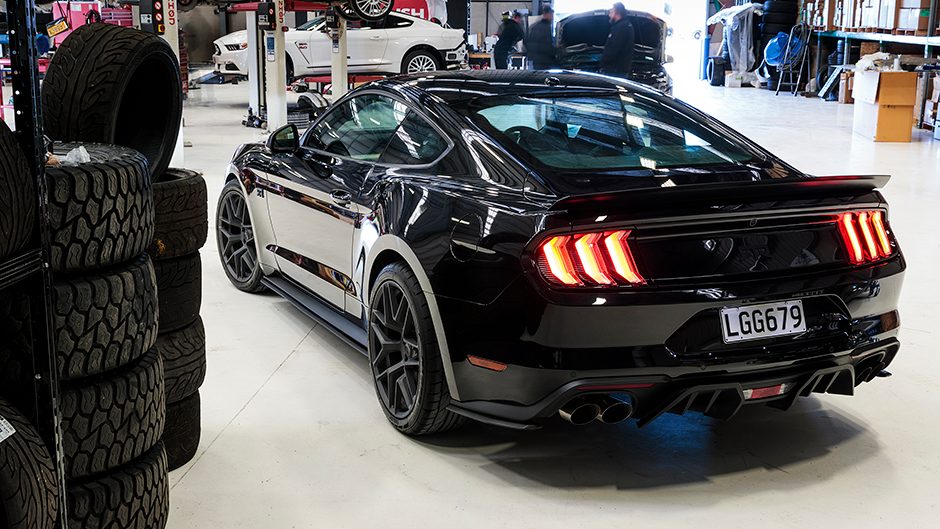
This set-up is tuned to run on 95, and with 10 pounds of boost, it nets 700hp, or 520kW. All the electronic modules are reflashed, including the fuelling, and the transmission has been remapped to change a few of the shift points to help mitigate traction losses.
The package is also put through a thorough testing regime at Roush Industries. Among many other engineering services, the company carries out prototype and engine testing for the automotive OEs, including the big three. Its Detroit-based facility features over 50 engine dynamometers and so its Roush performance packages are subjected to the same rigorous tests. And the supercharger kit is backed here by a three year/100,000km driveline warranty, covered by Ford Performance and taken care of here in New Zealand by CTB Performance.
CTB did over 50 supercharger upgrades on the previous model and say they have all held up well. They have not experienced any major mechanical issues, though a few half shafts have needed servicing (the new car has beefier components). The diffs, gearboxes and engines have all held up to the extras. The only issues have cropped up when customers with Stage 3 kits have gone elsewhere to get more power, and have then run into problems. To get more power, you need to start looking at upgrading your block and internals. CTB has one customer with a Mustang turning 520kW at the treads, whereas this kit will likely lay down 400 at the wheels when they dyno it. The service intervals are 15,000km/12 months, though CTB says every 10,000km is better. One thing they don’t change on this new one is the exhaust, the new bi-modal system providing good flow and sound, and the ability to run stealthily too.
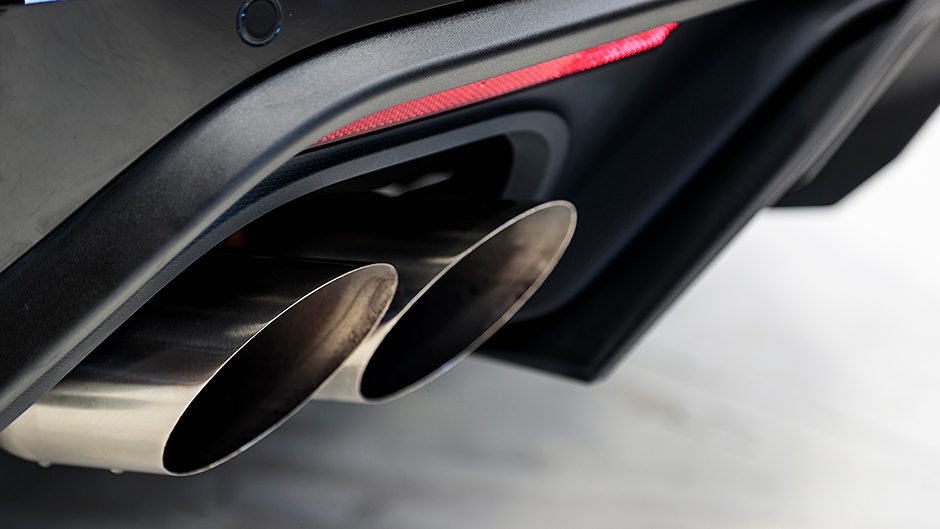
The blown option can be commissioned at your local Ford dealer, making it a seamless process, with the car delivered first to CTB for the treatment and then on to the dealership for customer delivery, the process taking about two weeks.
RTR goes drifting downunder
CTB Performance has recently acquired the right to distribute the RTR brand in New Zealand. Bakalich says he had been enquiring about bringing RTR products to New Zealand for some time without much success, though after forming a working relationship with local drift star, Daniel ’Fanga Dan’ Woolhouse, things started to happen.
Woolhouse previously drove a Holden but Bakalich suggested switching to Ford and the Mustang to help boost CTB Performance’s presence on the racing scene. After reaching out to Ford Performance in the US about sourcing steering components for a drift car via RTR, Ian Stewart, a Kiwi and part owner of RTR, was quickly in contact. When Stewart found out Fanga Dan was involved he was keen to talk turkey.
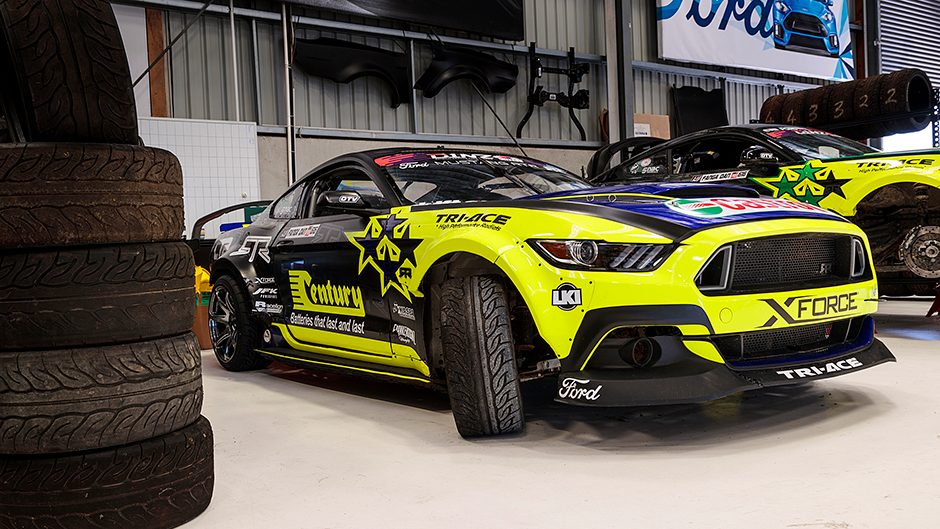
The only problem was RTR didn’t sell the individual components they were after, only complete race cars. And so they ended up buying a Formula Drift-spec RTR Mustang which Woolhouse uses to compete in the local D1NZ championship. As Bakaliach puts it, rather than merely sponsoring Woolhouse, CTB has invested in the team to work together and build the brand, with Fanga Dan as the brand ambassador.
There are two cars in the team, one is supercharged and is used for promo days, while the other is the full drift-spec RTR machine running a 1000hp, 436 cubic inch Roush racing engine.
Ready to rouse
The look of this Mustang is honed with the fitment of an RTR bodykit. This consists of a new front splitter, lower and upper grille inserts and those awesome looking daytime running lamp treatments. There are also functional air deflectors in the outer bumper to channel the breeze through to the brakes and new heat extractors on the bonnet. Side skirt extensions, 20-inch wheels with 275 cross section rubber all around and a bootlid rear spoiler and big rear diffuser round out the visual updates.
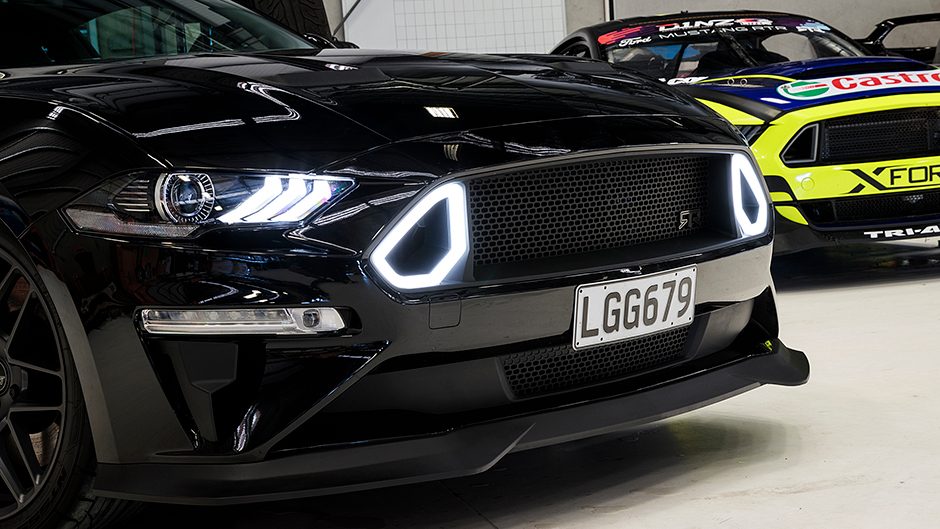
The car comes with RTR-developed suspension which includes lowering springs (omitted here) on custom shockers with adjustable bump and rebound, and variable sway bars. If the donor car is fitted with MagneRide suspension, it receives a new spring kit only. The souped-up ’Stang is available as a Spec 2 for $99,990, which includes the cost of the donor car. This also gets a power pack to liberate an extra 10kW. The Spec 3 car is fitted with the supercharger and costs $119,990.


